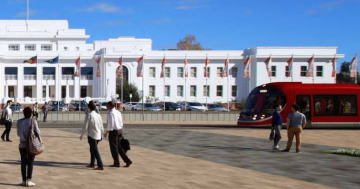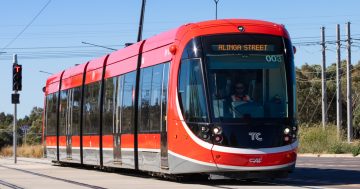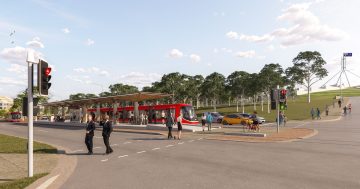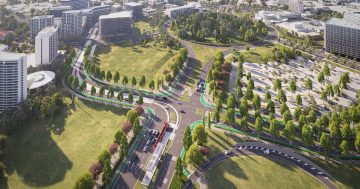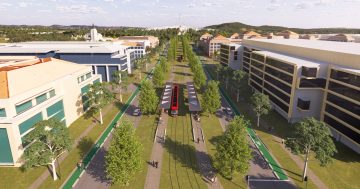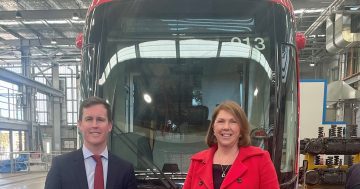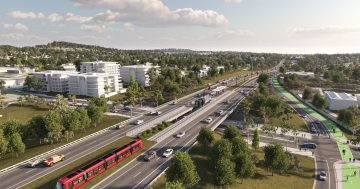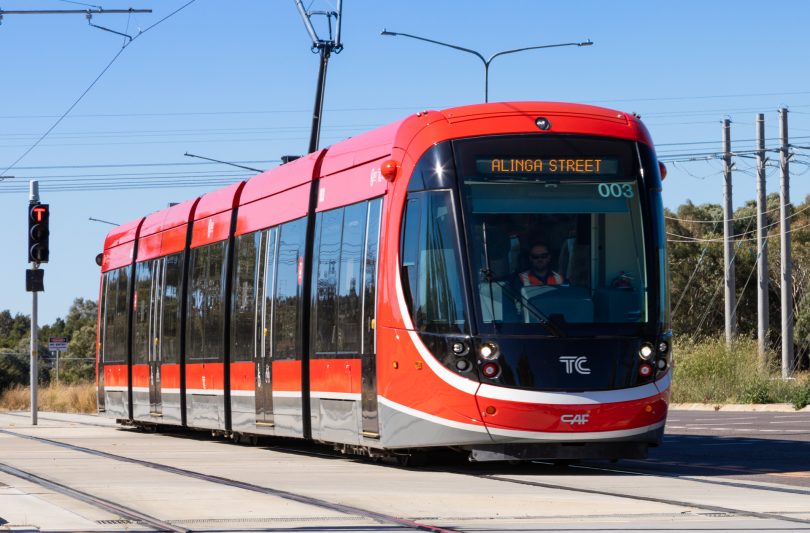
Light rail needs to be as direct as possible along main corridors. Photo: Michelle Kroll
Light rail travelling through the Parliamentary Zone to Barton on the so-called ‘dogleg route’ before joining Adelaide Avenue for the run to Woden was always a thorny proposition and remains so.
Whatever technical or engineering challenges have been identified on the State Circle turnoff from Commonwealth Avenue, the more direct route to Woden is still the best bet from a public transport and heritage perspective.
It may seem attractive to have light rail divert along King George Terrace and National Circuit closer to the national institutions and government buildings, especially with Barton set to boom with the new National Security Precinct and other buildings such as the new Tax Office, but it would be more complicated, cost more and be a longer trip.
It is forecast that there will be 5000 more public servants working in Barton when these developments are completed, and efficient public transport will be crucial in moving them in and out of the area.
There has always been an argument that the route should go as close to these employment centres as possible to capture those customers to make it viable.
National Capital Authority CEO Sally Barnes has acknowledged that this changes the equation somewhat when it comes to considering a reversion to the Barton route, but she is as protective as ever of what is one of Canberra’s great public precincts in Parkes.
Not done properly, light rail could scar the landscape, she says.
But unless there is an overwhelming reason why the State Circle route should not continue to be preferred, there should be no need to go there.
The nearly 100-year-old cedar trees are already likely to fall to make way for the tracks in the Commonwealth Avenue median. That should be the limit of the change to the landscape.
Yes, visitors and workers might have shorter walks to their destinations, but it is not really that far of a stroll at present from Commonwealth Avenue.
In Barton, stops along State Circle at Kings, Brisbane and Sydney Avenues should be sufficient to service workers who, again, will be only a short and healthy walk away.
Meandering into Barton would only repeat the mistake of some suburban bus routes, which make for long journeys; in this case, extending the duration of the Woden to City trip way beyond the current Rapid bus service.
Light rail, in particular, should stick to main corridors and provide a direct, uncomplicated and fast journey between major centres.
The Barton route would also pose its own engineering challenges, especially National Circuit, which hardly looks wide enough to carry light rail.
But this is still a long way off, and if the Canberra Liberals have their way will never eventuate.
The glacial pace of extending light rail has raised doubts about whether, even under this government, the Woden leg will actually happen.
The Gungahlin-City stage opened in 2019 and we’re not likely to see the short 1.7 km leg to Commonwealth Park until 2026 or 2027.
Yes, it’s complicated with all those levels of approvals, but the delays erode public confidence in the capacity of the government to deliver the Woden stage and future stages.
This latest hiccup with the State Circle route will only add to this.
The government needs to get cracking or see the public support it claims for the project evaporate.












